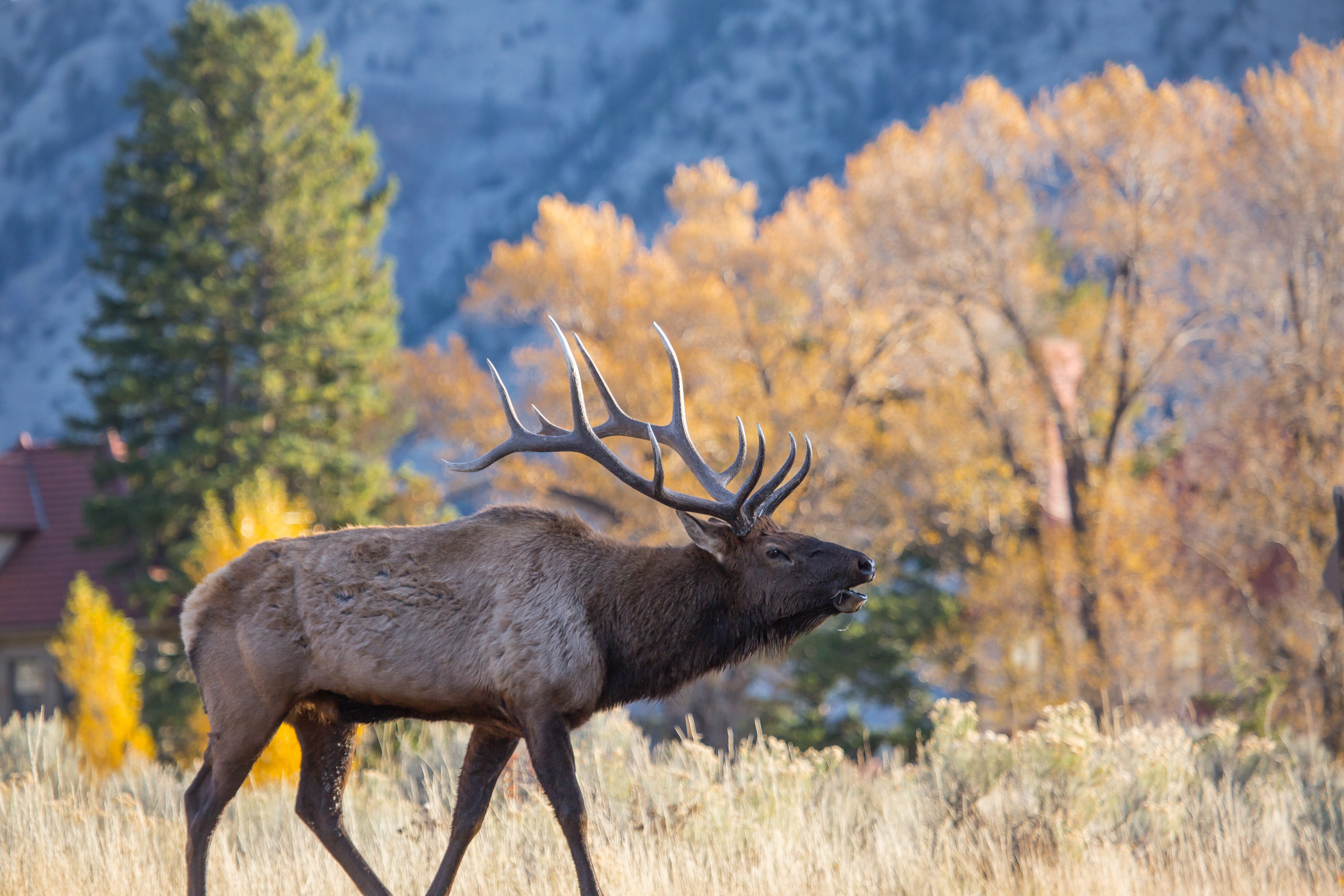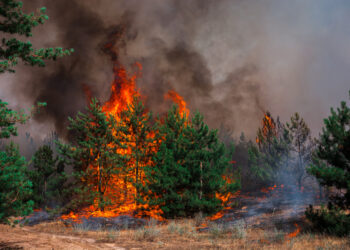As spring approaches, elk shed their antlers. If you’re lucky, you may stumble across these beautiful—and valuable—treasures.
By Jessianne Castle EBS CONTRIBUTING EDITOR
BOZEMAN – Forty pounds. That’s the weight of a large six- or seven-point set of antlers carried by mature bull elk throughout the fall and winter months. Antlers are critical both for securing a mate and genuine self-defense. As a renewable resource, they are sought-after by outdoorsmen both for the pretty penny they bring and their own aesthetic quality.
The growth cycle
A variety of ungulates in the deer family sports antlers, which are shed and regrown annually. Antlers are made of true bone and are an extension of the skull. They begin to grow in male elk, moose and deer in the spring when the animal is about 1 year old and will continue a cycle of growth throughout the animal’s life.
As antlers grow, they’re covered by a soft coat of skin and hair known as velvet. This blood-rich layer deposits calcium that forms the antler itself. In elk, they continue to grow at a peak rate of two-thirds of an inch every day while the bull munches on summer grasses, according to the National Park Service’s 2018 Yellowstone Resources and Issues Handbook. Growth occurs in yearling bulls for about 90 days, and for healthy, mature bulls, the antlers could develop for upward of 140 days, reaching about 55 to 60 inches in length, the handbook states.
A hormonal change signals growth to stop sometime around August in preparation for breeding season, called the rut. As the rut approaches in fall, bull elk rub their antlers on trees and shrubs scraping off the velvet to reveal the brown- and ivory-colored antler beneath. These racks are then used for posturing and sparring in order to secure breeding rights over groups of cow elk.
Bulls retain their antlers through winter as a tool for self-defense and the lengthening daylight of spring, accompanied by a drop in testosterone levels, triggers the existing antlers to shed in March or April.
New growth begins quickly after. Small bumps on the forehead begin to swell, enlarging into knobby buds and extending out into a branching formation that often reaches magnificent size. Generally, genetics determine the actual form of the antler, while nutrition and age influence the length and size.
Beating the odds
Sometimes described as an Easter-egg hunt for adults, the sport of looking for antlers, often known as shed or horn hunting—though a shed antler isn’t a horn—has gained traction as a springtime activity both for its lucrative nature and for the opportunity to test the odds.
“It’s fun to get out and wander around the woods and the mountains and you have a chance to stumble across an antler or two,” said Clark Dodd, a musher for Yellowstone Dog Sled Adventures south of Big Sky. A longtime resident of Paradise Valley who now spends a portion of his winters in Gallatin Canyon for work, Dodd has been collecting antlers for years. “I think my wife would say that I keep too many of them,” he said through a chuckle.
Dodd couldn’t point to a single reason why he looks for antlers. He described it as a kind of mysterious attraction, perhaps ancestral or an innate desire to collect. “For some people, it’s a chance to make a few bucks or find something for decorating the house,” he said.
A large part of it, according to Dodd, is the excuse to go do something with his dogs. Bella and Nugget, his Labrador retrievers, are accomplished shed dogs, meaning they will find and retrieve antlers. Bella, now 10, was capable of carrying a large six-point when she was in her prime about four years ago, and while Dodd likely covers 10-12 miles during a day of shed hunting, he expects his dogs put on three or four times the distance.
“They find things I would never, ever find without them,” he said, describing the yellow and chocolate labs digging up antlers from beneath pine needles and leaves or from beneath snow.
Many of the antlers Dodd finds, he keeps; some he’s turned into cabinet and drawer knobs and pulls for the house, some he has strewn about inside and out as decoration. However, Dodd also portions antlers into dog chews and bottle openers and sells them periodically online.
Natural forms become art
Fish Fisher, the owner of Fish’s Antler Art at Four Corners, is also drawn to the allure of antler. First transfixed as a hunter, one day he put a use to his collection and started making small household items. Now, 30 years later, Fisher is proud to build intricate chandeliers, tables and lamps, some of which sell on the high side of $25,000, though he says he creates items for every price point.
“It’s fun to sell something that you built with your own hands,” Fisher said, adding that antlers’ unique and natural shapes become a sort of puzzle. He selects antlers that fit together naturally rather than cut them to make it work. His 25-year-old son, Riley Fisher, also works in the antler studio creating fine carvings and helping to design and build the fixtures and furnishings.
While some clients bring in their own antler collection to use for a piece, Fisher makes most of his items from antlers he’s bought off an expansive antler market. New ones pass through his shop on a weekly basis, and include moose paddles from Alaska and Maine, elk antlers from Montana, and fallow deer racks from Texas.
For a quality elk antler—those that are dark brown and without cracks and blemishes—the going rate could be as high as $15 per pound, and Fisher works with dealers selling antler bundles to the tune of $50,000. Often, he attends the annual antler auction at the Flying D Ranch owned by billionaire Ted Turner, where the operation sells antlers found on the property for what Fisher estimates is close to $300,000 to $400,000.
What’s the big deal? Fisher said it simply: “Folks like the Western look.”
Whether horn hunter or homeowner, the trace of a wild animal is sacred. Antlers, which are beautiful in their own right, give us a glimpse into the natural world and are relics of those animals that call our mountains and forests home.
—
When do they shed?
Elk: March-April
Moose: November-December
Whitetail Deer: Mid-December
Mule Deer: January-February













